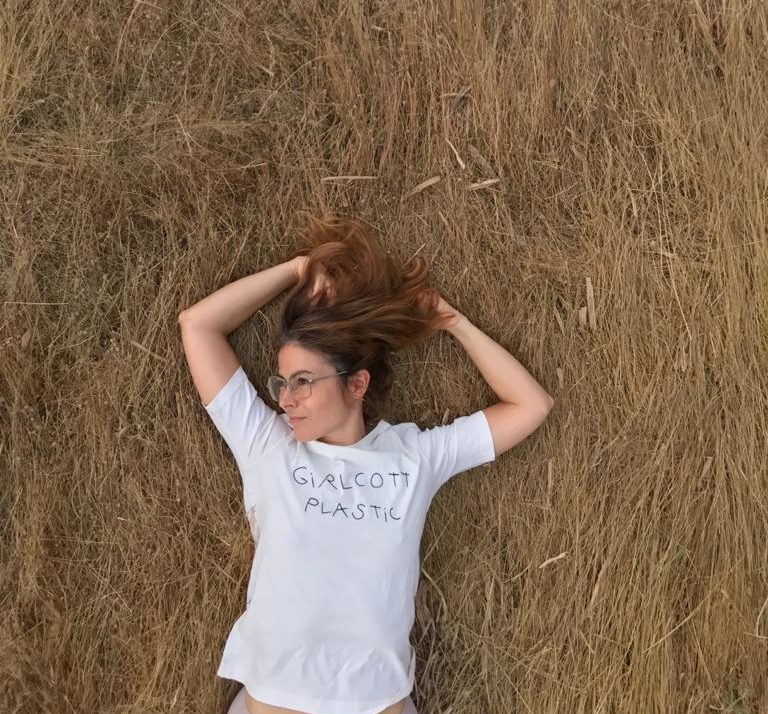The future of sustainable fashion will not be guided by corporations. It will be by people with visible values, enough knowledge and awareness about how the industry should urgently redirect and who can implement solutions to the environmental crisis. Conscious consumers want to know who is behind the curtains, if the values behind the brand that is supporting align with theirs and if the business is created by truly environmentally conscious people. Creating sustainable products is not enough anymore. Companies led by people only interested in sustainability from an economic point of view, have no truthful connections to environmental issues. We see double agendas, such as the combining of sustainability and economic growth sometimes with the excuse as maintaining jobs for textile workers, but we believe in local economy besides these countries will be the ones with bigger climate change consequences. Most of the current fashion companies rely on fast production which is possible by copying and moving where labor and environmental laws have low standards.
[rɔ:] [ro:]
Raw and roh phonema
"in its natural state"
PEOPLE WITH PURPOSE
MY STORY
We are in an emergency climate; we cannot be radical enough on climate crisis actions, quoting Attenborough. It is necessary to speed up to save the Earth. The truth is, the world doesn’t need another fashion brand. The elephant in the room is the overconsumption of textiles; it is the larger problem that must be tackled. But the reality is also that, while we get there, we need honest industry models and speakers with an activist approach that breaks the status quo, that reveals what patterns need to be changed and the harmful side of the industry to create a well-informed community. That is why I felt the need to slow down a bit and fit my values into my professional life. I wanted to provide the transparency that characterizes me in my personal and professional life. My love for fashion started in the second-hand markets, the appreciation for durable and natural quality clothing and also with the connection of craftsmanship, all textiles and objects which were hand woven and using natural dyes became an obsession. I started drawing fashion sketches at a young age and grew up in a nature-led environment, in fact my father is a biology professor.

I studied Architecture in Andalusia and Textile and Clothing Design in Barcelona. In my trips I have always combined my two passions: ocean and local hand craftsmanship; traveling and diving in Indonesia became an expert in Ikat and natural dyes and at the same time I rooted myself in a respect towards the ocean and the great problem of plastics outside the colonialist perspective. For a time I decided on the comfort of a job within the normative industry in which I acquired a lot of experience as a fashion designer although I never felt comfortable since a system that was based on the short term and the lack of honesty with the citizens and objectifying them, as a consumer through overconsumption and overexploitation of the planet. In those years, due to my love for the oceans, little by little I became aware of the impact on water that the fashion industry implies. Another of my main concerns was the lack of relevant and truthful information about the sustainability offered by the fashion market. I decided to get out of my comfort zone and take advantage of my privileges by creating an honest brand and starting the unfinished path to learn how to reduce environmental impact and create a movement that puts honesty, the need to take urgent actions and environmental justice at the center of the fashion industry.
WHO RELY ON?
From the last few years I have been learning as much as I have been able of sustainability and circular fashion. I usually rely on knowledge provided for independent organizations such us as Mistra Future Fashion and Greenpeace and share my concerns with the Union of Concerned Researchers in Fashion. Creating products for circularity needs a change of mindset, a good understanding of the complexity of supply chains, material and the requirements of existing and available textile recycling industries. Embed environmental values into aesthetic experiences in the context of sustainable fashion requires constructing a new basis for value creation and educating our aesthetic taste to appreciate the environmental impact during all phases.
Thanks to all the people who have helped and made me to get where is I now as well as all the suppliers who have patience with this necessary journey.
Rocío Cota

